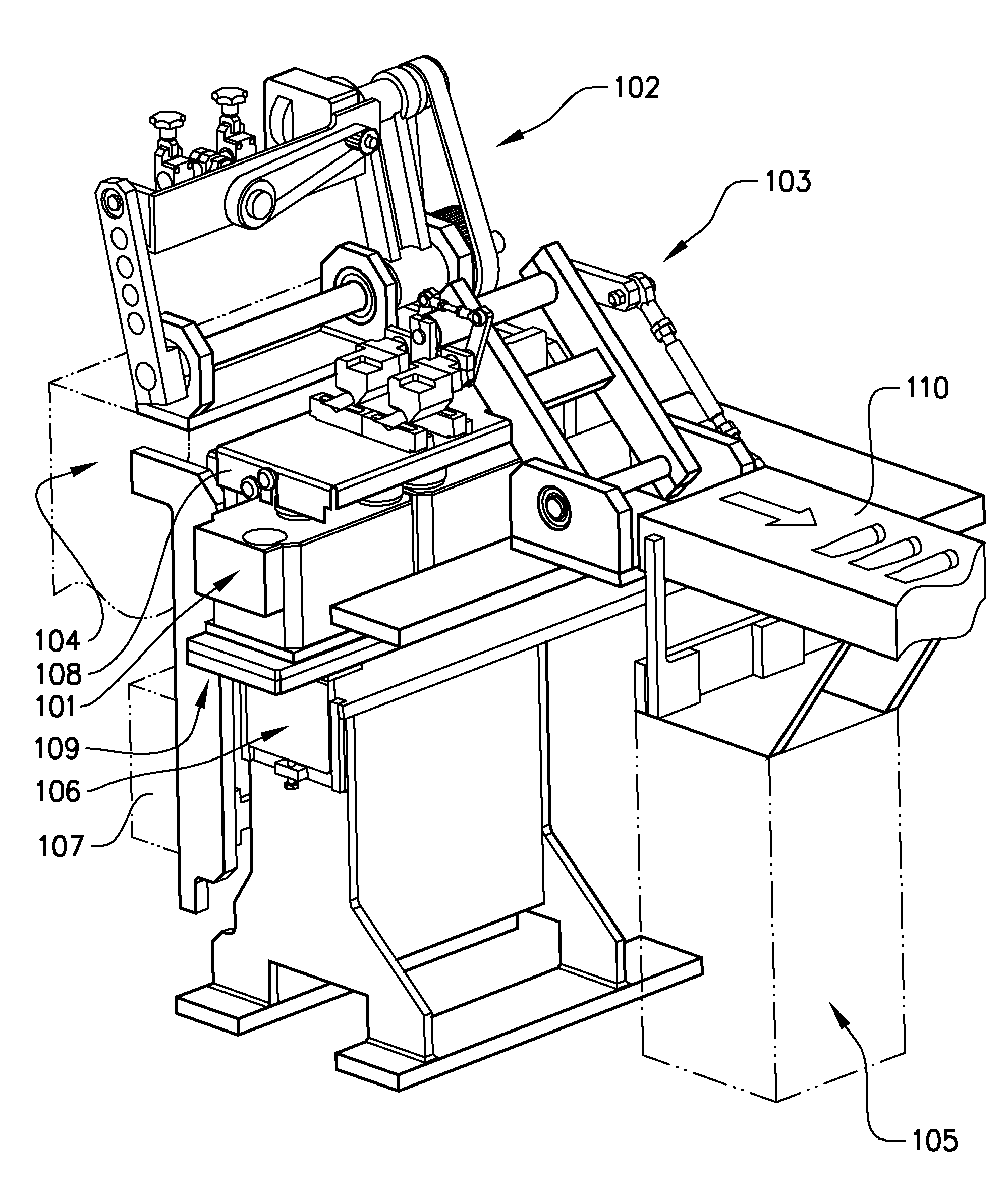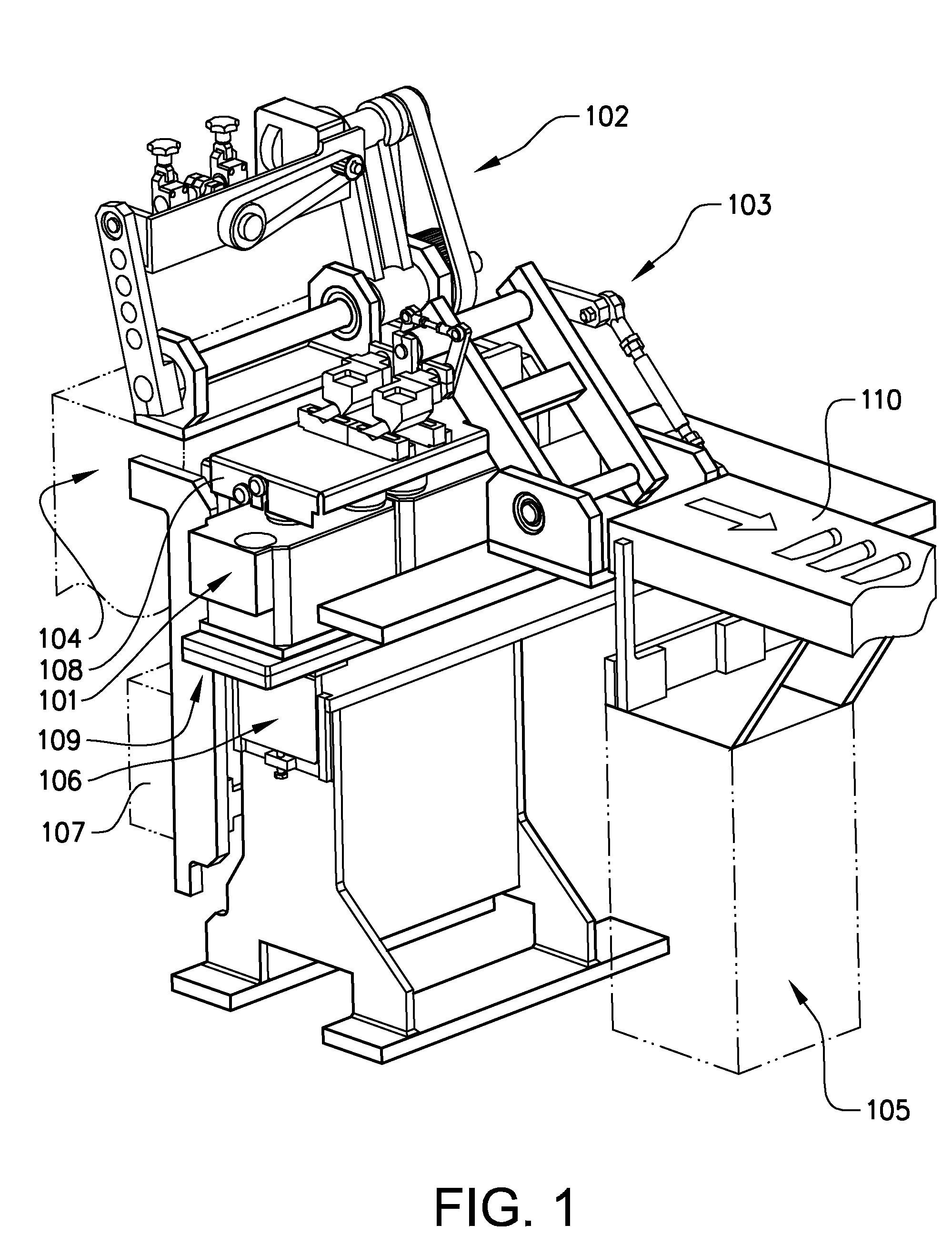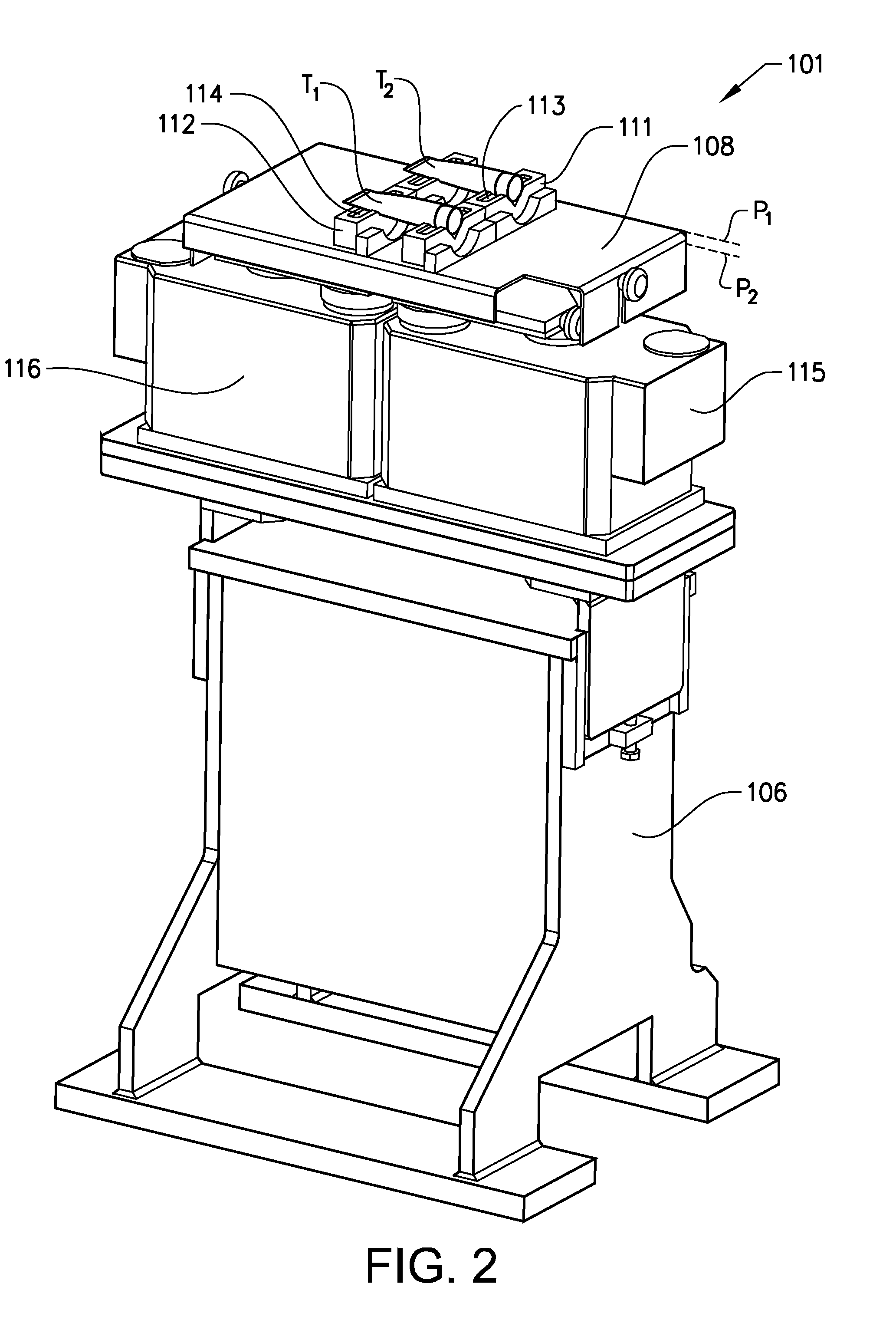Method for weighing products and a checkweigher with roller assemblies that dampen the movement of the produce prior to weighing
a technology of roller assemblies and checkweighers, which is applied in the direction of weighing apparatus for continuous material flow, instruments, transportation and packaging, etc., can solve the problems of inaccurate weight readings and inaccuracy of consecutive product weight readings, so as to minimize the total weight measured by the weighing cell, minimize the interference caused by vibration, and improve the effect of accuracy
- Summary
- Abstract
- Description
- Claims
- Application Information
AI Technical Summary
Benefits of technology
Problems solved by technology
Method used
Image
Examples
Embodiment Construction
[0042]FIG. 1 schematically illustrates a part of a production line with a checkweigher according to the invention. In this example the checkweigher 101 is located between a filling station and a packaging station (not shown) in a production line for filling and packaging tubes, such as tubes for toothpaste or cosmetic products. The checkweigher in FIG. 1 is located between a first pick-and-place device 102 and a second pick-and-place device 103. The first pick-and-place device 102 is arranged to pick filled tubes arranged in a vertical position from a filling conveyor (not shown), rotate the tubes through an angle of 90° and place the tubes in a horizontal position on the checkweigher 101. The second pick-and-place device 103 is arranged to pick tubes from the horizontal position on the checkweigher 101 and place the tubes in a horizontal position on a subsequent conveyor 110 for transfer to a packaging station. Both the first and the second pick-and-place device 102, 103 are mounte...
PUM
 Login to View More
Login to View More Abstract
Description
Claims
Application Information
 Login to View More
Login to View More - R&D
- Intellectual Property
- Life Sciences
- Materials
- Tech Scout
- Unparalleled Data Quality
- Higher Quality Content
- 60% Fewer Hallucinations
Browse by: Latest US Patents, China's latest patents, Technical Efficacy Thesaurus, Application Domain, Technology Topic, Popular Technical Reports.
© 2025 PatSnap. All rights reserved.Legal|Privacy policy|Modern Slavery Act Transparency Statement|Sitemap|About US| Contact US: help@patsnap.com



